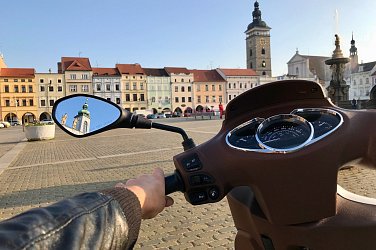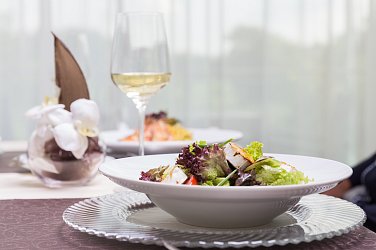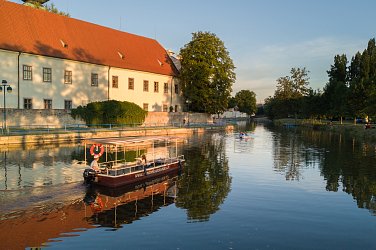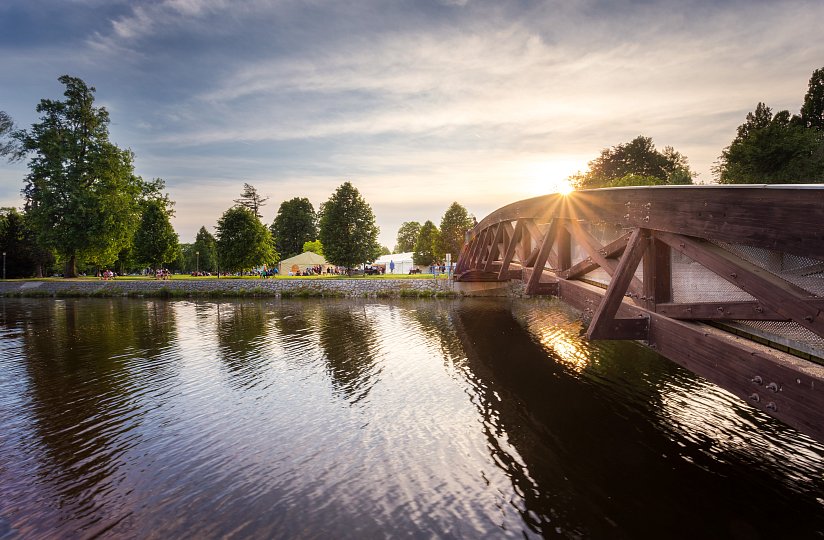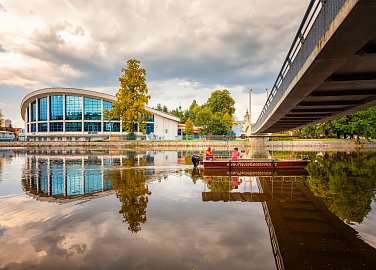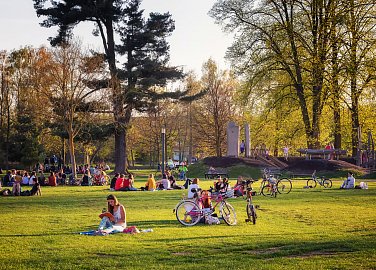Walking Routes - To the island
The route: Přemysl Otakar II Square - Krajinská Street - Masné krámy (Meat Shops) - Hradební Street - Plachého Street - Hroznová Street - Vltava Blind Arm - Sokolský Island - confluence of Vltava and Malše - Salt Gate - Radniční street
Use the Přemysl Otakar II Square as the starting point from which you can enter Krajinská Street. Here after a while you come across one of the most famous monuments of the city – the former Meat Shops. The Emperor Charles IV ordered the sale of meat to be moved from the square to a brick building in 1364. The current appearance is Renaissance and dates from the mid-16th century. In the 1950s the meat shops ceased to operate as a market place and a renowned restaurant was built here, where you can taste the world famous Budweiser Budvar.
On the corner of Krajinská and Hroznová Street stands the monumental palace of Komerční banka from 1912-1913 built mostly in the Art Nouveau style. Significant interior artists were involved in the rich interior decoration. Continue along Krajinská Street, where the houses have mostly Classicist façades with Renaissance or even Gothic cores. Inter alia, you can find another of the seven breweries in Budejovice. At the end of the street, on the left, there is the important Renaissance Zátka House from the 16th century, the birthplace of Dr. August Zátka, a prominent local politician and patriot.
Turn right into Hradební Street, which follows another part of the original city walls and leads us to Plachého Street. Until the mid-19th century it was one of the most remote parts of the city. In the Middle Ages there were markets here where buyers sold pigs, and was named Sviní Street (Swine Street). In 1875 it was named after the town scribe Simon Plachý of Třebnice, who was shot dead when Passau troops invaded the city.
At the end of Plachý Street, turn right into Hroznová Street called Hroznovka by locals. Pass the aforementioned Masné krámy restaurant with the Komerční banka building: within easy reach there is another cultural monument of the city from the beginning of the 16th century - Lubas House. It retained the original core and a remarkable corner oriel on three stone corbels. Continue straight to the blind arm of the Vltava River, where the Sokolský Island stretches out onto its other bank. The island is used as a place to relax and meet; cultural, musical and sporting events are also held here. Here you can find, inter alia, a sports complex with a summer and winter swimming pool, an athletic stadium, a boat rental and a Functionalist Sokol building from 1939-1947.
Leave Sokolský Island using a wooden footbridge which offers a beautiful view of the confluence of the two rivers, Vltava and Malše. At the end of the footbridge, you can see the Salt Gate, already mentioned in the Route “Around the City Walls” named after salt, which has been transported here from the nearby warehouse to the river bank since the 16th century, loaded onto ships and transported to Prague. Today it serves as a mere reminder of these times and as a passage of the city fortifications around the embankment to Radniční Street, which again brings you to the main square in the city square.
